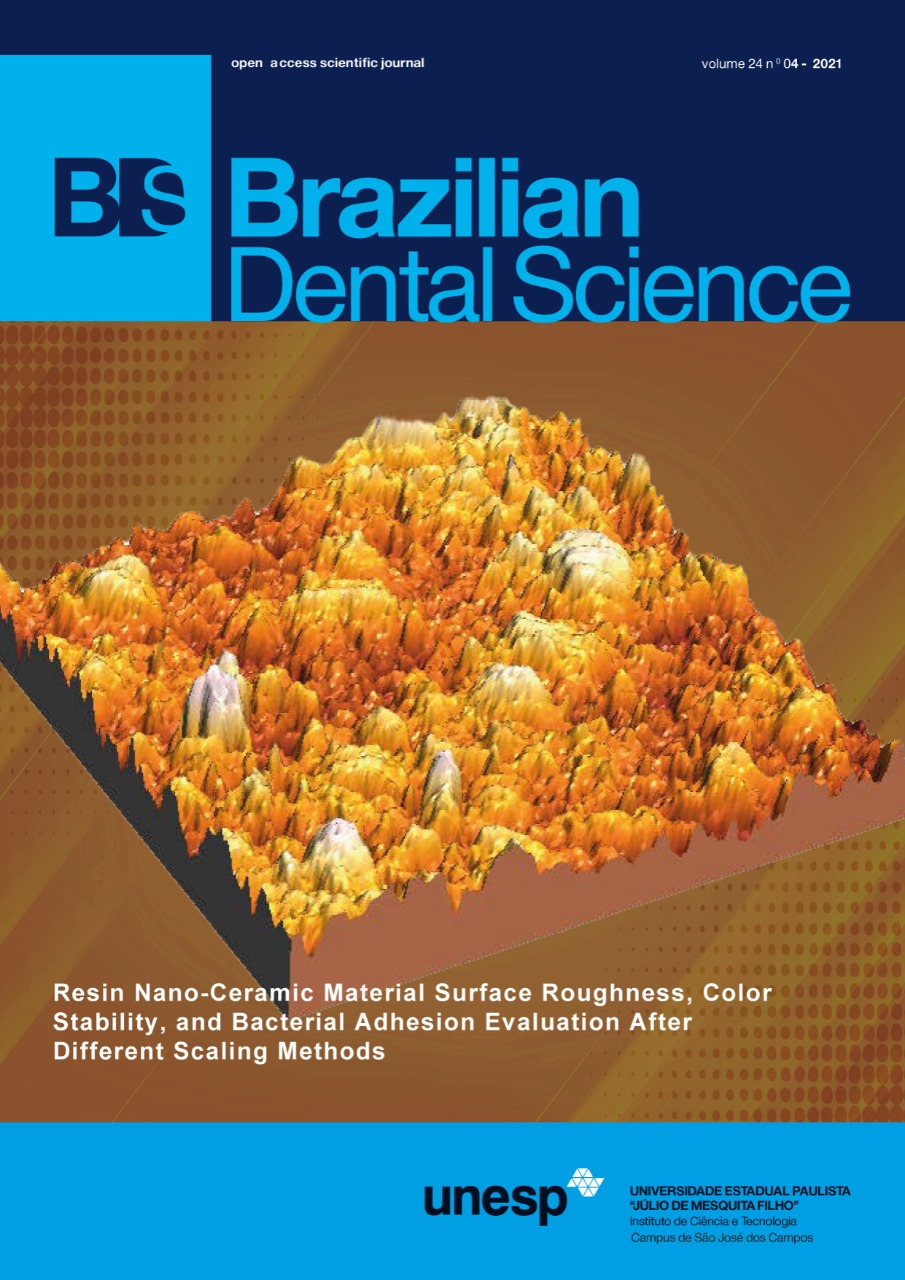Resin Nano-Ceramic Material Surface Roughness, Color Stability, and Bacterial Adhesion Evaluation After Different Scaling Methods
DOI:
https://doi.org/10.14295/bds.2021.v24i4.2584Abstract
Objectives: The study evaluated in vitro the changes in roughness, color stability, and bacterial count of a CAD/CAM Resin Nano-Ceramic material surface treated by various scaling procedures. Material and Methods: 70 disks (5mm diameter, 0.5 mm thickness) of Resin Nano-Ceramic (Lava ™Ultimate, 3M, ESPE) material were cemented in standardized cavities prepared in bovine teeth. A custom-made scaling apparatus of a double pan balance was used for different scaling methods, simulating standard clinical conditions. The specimens were assigned to three main groups: no scaling(C), ultrasonic scaling (U), and manual scaling (M). Each group was then divided into three subgroups according to scaling tip material; stainless steel tip (St), plastic tip (P), and titanium tip (Ti). The surface texture was analyzed quantitatively and qualitatively with a tactile profilometer and atomic force microscopy. A spectrophotometer was used for color measurement. Streptococcus mutans were counted in a colony counter. All the data were tabulated and statistically analyzed. Results: Two-way ANOVA was used to study the effect while One-way ANOVA was performed to compare between study groups. The significance level was set at p 0.05. The ultrasonic titanium tip(UTi) revealed the significant highest mean value of alterations (p < 0.001). The integrity of the material surface was altered in the form of deep scratches on the ultrasonically scaled surfaces and numerous smaller scratches on the hand-scaled surfaces. Conclusion: The plastic instrument would appear to be the instrument of choice during a routine maintenance procedure for Resin Nano-Ceramic materials.
Keywords
Bacterial biofilm; Dental ceramics; Color stability; Scaling; Surface roughness.
Downloads
Downloads
Published
How to Cite
Issue
Section
License
Brazilian Dental Science uses the Creative Commons (CC-BY 4.0) license, thus preserving the integrity of articles in an open access environment. The journal allows the author to retain publishing rights without restrictions.
=================




























